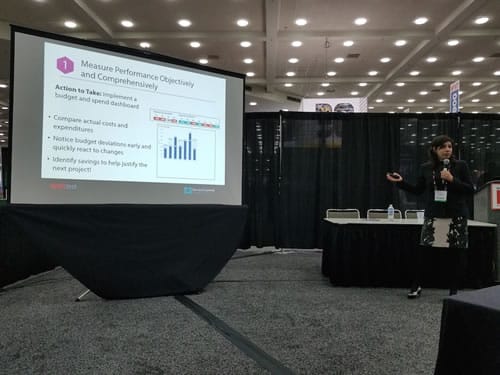How to Create a Comprehensive Facility & Maintenance Budget

Over the past few years, we’ve seen monumental changes for business operations — innovative technologies like IoT, AR and VR gained traction, mobile in the workplace became even more widespread and customer experiences became even more important for winning business.
That means you should turn your attention to your repair and maintenance budget, which makes a world of difference when it comes to your internal processes and spend, as well as the face you present to your customers.
Setting a comprehensive budget for facility maintenance, which falls largely under the facilities management umbrella, can be complex; there are numerous elements to consider, widespread stakeholders to involve and massive amounts of data to sift through.
Use the following best practices to ensure your facility maintenance budget is comprehensive and leaves as little room for surprises as possible:
1. Plan for Proactive Maintenance, But Set Aside Budget for Emergencies

Think of it this way: the longer you defer maintenance, the greater the chances that what was once a simple upkeep job turns into a full repair or even replacement. How much of a difference can this make? Experts estimate the cost of putting off maintenance could be up to 30 times that of what the proactive costs would have been.
Thus, allocate a significant portion of your facility maintenance budget for proactive work. While it may look like a large expenditure in the moment, in the long run you’ll end up saving even more.
There are, of course, instances where reactive maintenance is unavoidable, such as weather-related emergencies. To avoid exceeding your budget, set aside a portion of your budget for addressing emergencies. How much you allocate will depend on the age of your facilities— Stanford University found that the cumulative cost of operating and maintaining its facilities rose as its buildings aged— where they’re located, and whether or not there are long-term plans in place to update or replace certain assets.
2. Analyze Spend from Past Years
Taking a look back at your facility maintenance budgets from recent years will help you anticipate your future spending. There are a few key elements to look for:
- Did you go over or stay under your budget?
- How did you spend breakdown—were there assets, locations or contractors that used more budget than you originally intended?
- What was the breakdown of proactive and reactive maintenance?
- Did you implement any practices or technologies that significantly changed how you spent?
Perform sophisticated prescriptive analytics to evaluate this data and determine the best course forward. In this way, you can be sure you’re making data-backed decisions about your budget for the coming year. For example, analyzing your budget breakdown from the past four years might reveal that repairing your HVAC system has eaten up significantly more than what’s been allocated. That indicates it likely may be time to invest in a new HVAC unit, since the ongoing repair costs outweigh the replacement cost.
It can be helpful to integrate an analytics engine into your budget-planning processes, as many are equipped with machine learning capabilities that can not only store and organize enormous amounts of data intelligently, but will evolve over time to make even better recommendations in future.
3. Consider Seasonal Maintenance Needs
Each season comes with its own set of unique FM challenges, so keep this in mind when you layout your yearly budget. If your facilities are located in areas with harsh winters, you need to assign a portion of your budget to snow and ice removal, potential power losses and heating system maintenance. Similarly, if your facilities experience blistering summers, you need to set aside a budget for air conditioning upkeep.
Be proactive by planning to execute winter and summer preparedness measures long before those seasons arrive; the mild fall and spring months are good times to perform such tasks. Also, be sure to plan for increased emergency spending during winter and summer months.
4. Don’t Forget Hidden Costs
There may be underground costs that you might not expect to factor in but can throw your budget off course if unaccounted for. For example, procurement costs can add up, you may need to pay for software licenses on an ongoing basis and your invoices may come with processing fees.
Evaluating spend from past years can reveal where these hidden costs are sneaking in. You can also ask around within the facilities management team to determine if they handle costs you may not have considered initially.
Final Thoughts
During the process of budgeting, don’t forget to engage all of the stakeholders. Facilities managers are typically closest to the action, so conferring with them when budgeting can be incredibly helpful. Additionally, the procurement teams, CIO, and finance department can be useful for planning facility maintenance budgets. This practice helps ensure you don’t accidentally miss a key initiative you need to allocate spend for while also maintaining transparency across your organization.





